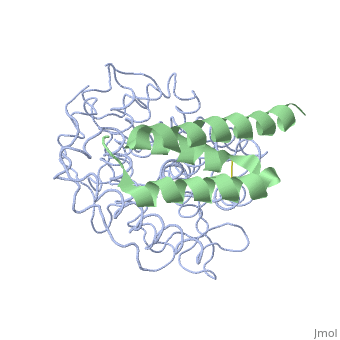Fibrinogen binding protein
From Proteopedia
Extra cellular fibrinogen binding protein- Efb
Staphylococcous Aureus is a bacterium that is commonly found on human skin and respiratory tracts; however, when it becomes pathogenic it can cause many diseases: skin infections, respiratory diseases(pneumonia), food poisoning. It is a Gram +, cluster forming coccus, non-motile, facultative Anaerobe and a leading cause of nosocomial infection. More about Staph Aureus
Complement System is part of the innate immune system and helps aid antibodies and phagocytic cells to kill off pathogenic cells. Complement system contains 30 proteins produced in the liver and are secreted into the body. Key proteins that are in the complement system that Efb inhibits:
C3A- vasodilation of blood vessels- increase in permeability, phagocytes can get to tissues faster
C3B- opsonization- coats bug with IgG and allows phagocytosis
more about complement system
cascade process
Efb function is a protein that is secreted by Staphylococcous Aureus which mimics the natural proteins in the body that inhibit the complement system. These proteins are called regulator of complement activation(RCA). In general, RCA proteins suppress the activation of C3 and C4 by dissociating the subunits of C3 and/or C5 convertases or by acting as cofactors for factor I–dependent cleavage of C3b and/or C4b. [1] Efb has been shown to bind to the C3d domain of C3 and C3B, inhibiting its function.
| |||||||||||
3D structures of fibrinogen binding protein
Updated on 26-January-2016
References
- ↑ 1.0 1.1 1.2 1.3 1.4 Hammel M, Sfyroera G, Ricklin D, Magotti P, Lambris JD, Geisbrecht BV. A structural basis for complement inhibition by Staphylococcus aureus. Nat Immunol. 2007 Apr;8(4):430-7. Epub 2007 Mar 11. PMID:17351618 doi:10.1038/ni1450
Proteopedia Page Contributors and Editors (what is this?)
Michal Harel, Rahul Gunasekera, Alexander Berchansky, Jaime Prilusky

